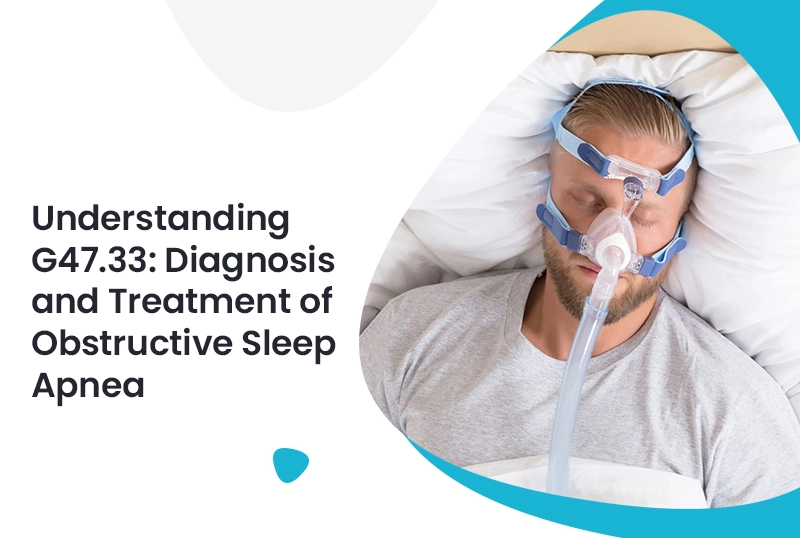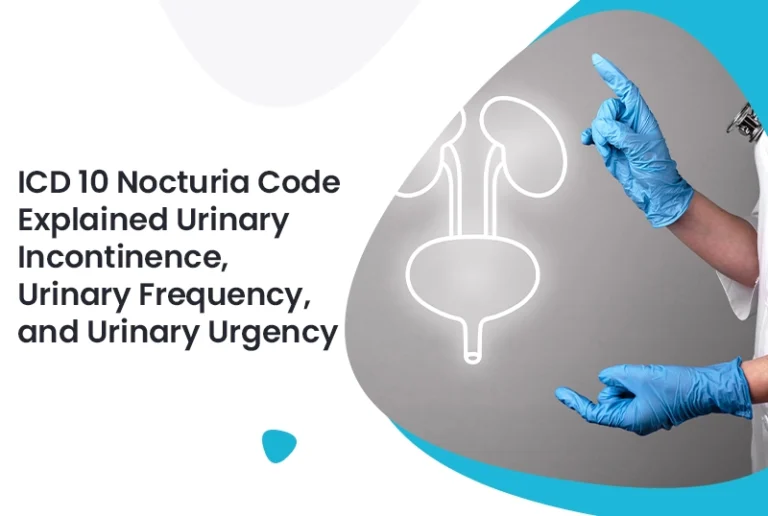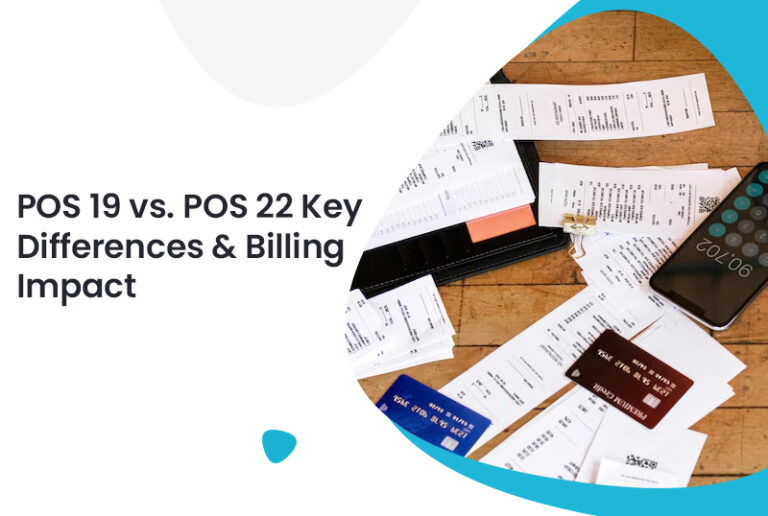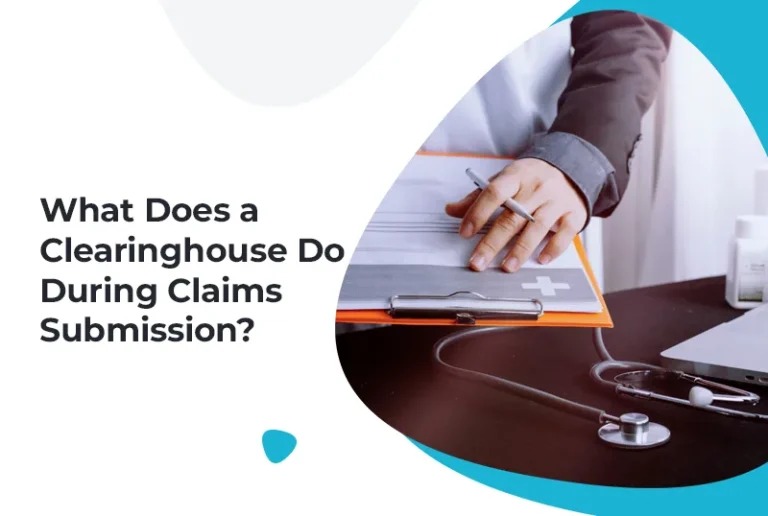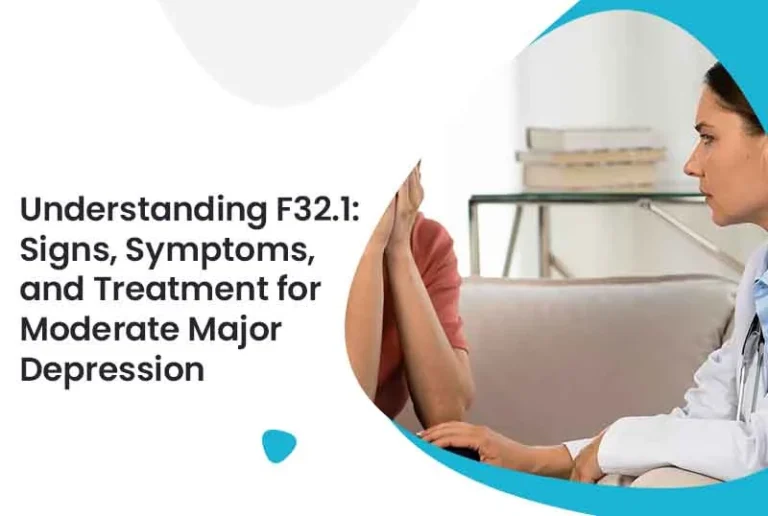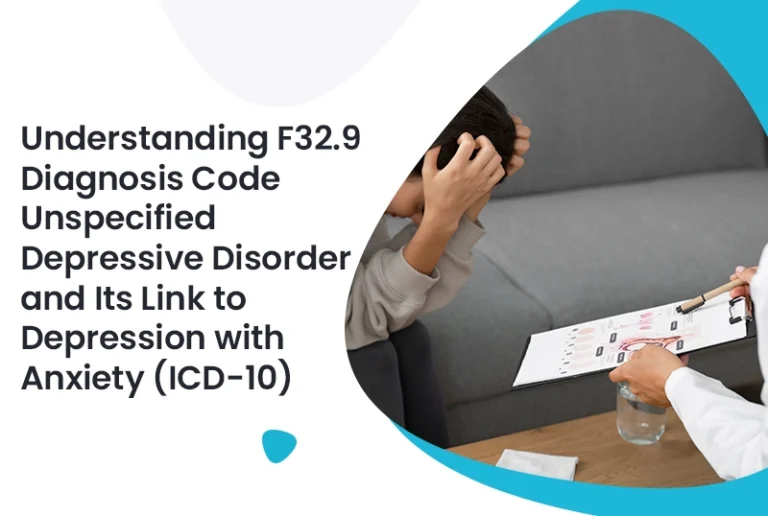Obstructive Sleep Apnea (OSA) is a common but often underdiagnosed condition that affects millions worldwide. In medical billing, the ICD-10 code G47.33 is used to classify adult Obstructive Sleep Apnea. For healthcare providers, working with a specialized medical billing service is crucial to navigate the complexities of billing for this condition accurately. Proper billing ensures your practice receives timely reimbursements and maintains compliance while supporting patient care.
What Is Obstructive Sleep Apnea and How Is It Diagnosed?
- Definition:
OSA occurs when the airway becomes partially or completely blocked during sleep, causing breathing pauses, fragmented sleep, and lowered oxygen levels. - Symptoms to Watch For:
Loud snoring, excessive daytime sleepiness, morning headaches, and difficulty concentrating are common indicators. - Diagnostic Tools:
Sleep studies (polysomnography) are the gold standard for diagnosing OSA. Home sleep apnea testing is also used in some cases. - Importance of Accurate Diagnosis:
Properly documenting a diagnosis with G47.33 helps justify treatment plans and supports insurance claims.
Common Treatments for Obstructive Sleep Apnea (G47.33)
Treating Obstructive Sleep Apnea (OSA) effectively requires a personalized approach based on the severity of the condition and patient-specific factors. Common treatment options include:
- Continuous Positive Airway Pressure (CPAP) Therapy:
The most widely used treatment, CPAP machines deliver steady air pressure to keep the airway open during sleep. Proper documentation of CPAP use and patient compliance is vital for billing. - Oral Appliances:
Dental devices that reposition the jaw and tongue to prevent airway blockage. These are typically prescribed for mild to moderate cases. - Lifestyle Changes:
Weight loss, avoiding alcohol and sedatives before bedtime, and sleeping position adjustments can improve symptoms. - Surgical Interventions:
In severe or treatment-resistant cases, surgery may be necessary to remove obstructions or enlarge the airway.
Documenting the chosen treatment supports medical necessity and ensures accurate billing under the G47.33 code.
Tips to Improve Claim Approval for G47.33
Submitting claims for Obstructive Sleep Apnea can be challenging, but following these tips can increase your chances of approval:
- Ensure Complete Clinical Documentation:
Include sleep study results, physician diagnosis, and treatment plans in the patient record. - Verify Patient Compliance:
For therapies like CPAP, insurers often require proof of compliance, such as usage reports. - Use Appropriate Modifiers and Supporting Codes:
Include procedure codes (e.g., for sleep studies or device fittings) alongside the diagnosis code. - Submit Claims Promptly:
Timely submission helps avoid rejections due to late filing. - Follow Up on Denied Claims:
Quickly address denials with additional documentation or appeals to recover revenue.
Implementing these best practices will help your practice maintain a healthy revenue cycle while delivering quality care.
Navigating Billing Challenges
Billing for OSA treatment can be complex due to varied payer requirements and the need for detailed documentation. This is where effective revenue cycle management services come in:
- Documentation Verification:
RCM teams ensure all clinical notes and sleep study results support the G47.33 diagnosis. - Claim Submission and Follow-up:
They handle timely and accurate submission of claims, reducing rejections and delays. - Denial Management:
RCM professionals quickly identify and appeal denied claims related to OSA services. - Compliance Monitoring:
Staying current with changing payer policies ensures your claims meet all requirements.
Do you have the right revenue cycle process to handle OSA claims efficiently?
Best Practices for Billing and Coding of G47.33
Accurate medical billing and coding are vital for maximizing reimbursements and compliance:
- Thorough Documentation:
Include comprehensive clinical notes, diagnostic test results, and treatment details. - Use Supporting Codes:
Pair G47.33 with procedure codes for CPAP devices, oxygen therapy, or surgical interventions as applicable. - Stay Updated:
Regularly review ICD-10 updates and payer-specific guidelines to avoid coding errors. - Audit Claims:
Routine reviews of submitted claims help catch discrepancies early. - Educate Your Team:
Provide ongoing training for coding staff and providers on billing nuances for OSA.
Conclusion
Understanding and correctly coding the ICD-10 code G47.33 for Obstructive Sleep Apnea is essential for efficient billing and patient care. Streamlining claims and improving reimbursement rates depends on effective processes and precise documentation. Accurate medical billing and coding ensure compliance and financial health for your practice. By mastering these elements, you can focus on delivering excellent care while maintaining a strong revenue cycle.
FAQs
1. What does ICD-10 code G47.33 represent?
G47.33 is the code for adult Obstructive Sleep Apnea.
2. How is Obstructive Sleep Apnea diagnosed?
Through sleep studies such as polysomnography or home sleep apnea tests.
3. How can a medical billing service help with G47.33 claims?
By ensuring accurate documentation, claim submission, and denial management.
4. What role do revenue cycle management services play?
They streamline billing processes, monitor compliance, and expedite reimbursements.
5. What are common coding errors to avoid for G47.33?
Incorrect or incomplete documentation and failure to use supporting procedure codes.

